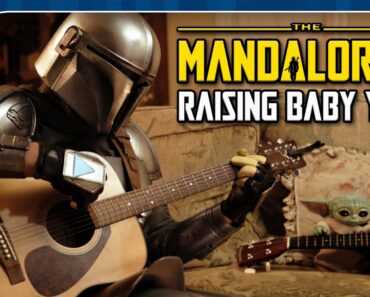Have you ever read or heard of the Aesop’s fable ‘The Ant and the Grasshopper’? It is a short story in which ants are shown to be highly intelligent and hardworking creatures who work tirelessly to save food for the harsh winters. In reality, too, ants are indeed smart creatures.
Ants are social insects that live in colonies and work very hard to survive. They are extremely strong and disciplined.
Despite their tiny size, there is a lot to learn from this wonderful species that is found almost everywhere on earth. Here are some interesting information and facts about ants for kids.
Interesting Information About Ants For Kids
Anatomy Of An Ant
Every living being on our planet has a unique body structure that helps it adapt to its environment. Similarly, the body of an ant can be segmented into three main parts, namely the head, the thorax, and the abdomen.
- Head: The head of an ant comprises its sensory organs. Ants have an excellent vision because they have compound eyes, meaning they have multiple lenses attached to each eye. Its mouth has an additional part known as the ‘mandibles’ that helps it hold, cut, and bite things. It does not have ears or a nose but two antennae at the top of its head that help it touch, feel, smell, and taste. It has a brain that helps it process the signals sent through these sensory organs.
- Thorax: The middle part of an ant is known as the thorax or mesosoma. All of its six legs are attached to this part. Each leg has two hooked claws that enable it to catch and hold things. Some queen ants and males may even have a pair of wings. However, it is mostly shed during or after mating.
- Petiole: The petiole is the part between the thorax and the abdomen of an ant. It can be compared to a human waist. It has a hinge-like function, which grants the ant the flexibility to twist and turn its body.
- Abdomen: The abdomen of an ant holds its heart, digestive system, and reproductive organs. Certain species of ants have stingers on their abdomen that shoot venom into their enemies.
- Exoskeleton: Made of a fibrous substance called chitin, the exoskeleton of an ant is the tough, waterproof body covering of an ant. This covering protects the muscles and soft tissues of the body.
How Do Ants Live?
Ants live in large groups known as colonies. Each colony consists of a single queen, drones, and worker or soldier ants. The queen is the largest ant of the colony. She is the mother of the other ants and controls the whole colony and lays eggs to produce offspring. The drones are the only fertile male ants that help the queen produce eggs. Lastly, the worker ants are the ones that collect food, build nests, and protect the colony. The majority of the ants in a colony are these soldier ants.
Where Do Ants Live?
Ant colonies can be built inside specific trees or plants. They can build colonies in wood and even underground. On the ground, they build their own little mounded ant hills. They can basically live anywhere except in extremely cold regions, such as Antarctica.
What Do Ants Eat?
Ants are omnivores, that is, they can eat both plants as well as animals. An army of ants can easily carry a dead insect several times larger than itself and take it to its nest.
30 Facts About Ants For Kids
For children who are glued to the National Geographic channel for their daily dose of animal and insect information, here are some interesting facts about this small but powerful insect.
- Ants are the descendants of the insect group Hymenoptera, an order of insects that includes wasps, sawflies, and bees.
- Ants have colonized almost every part of the world except the extremely cold areas such as Antarctica, Greenland, and Iceland. They also avoid volcanic regions such as Hawaii and Polynesia.
- The size of a colony of ants varies from a few dozen of ants to millions of ants.
- Ants build their nests with grains of dust and sand. The nests contain multiple chambers used for different purposes, such as storing food and eggs and resting.
- An average ant can easily carry ten to 50 times its body weight.
- The neck joint of a common American field ant can withstand pressure up to 5,000 times its weight (1).
- Researchers have indicated that there are about 12,000 different species of ants in the world (2).
- When out looking for food, ants leave behind a pheromone trail (scent trail) that allows other ants to follow them and also return to their nest following the same trail.
- Ants do not have a nose or lungs. They have little openings, known as spiracles, all over the body, which allows them to take in oxygen and give out carbon dioxide.
- The entomologist Ted Schultz stated that the presence of ants across the world is “arguably the greatest success story in the history of terrestrial metazoa.”
- Ants do not generally replace their queen ant. In case the queen dies, the rest of the colony dies within a few months after her.
- In a species of fire ants, the males and females can clone themselves to create a whole new male and female gene pool (3).
- Ants are the only creatures, besides humans, that practice farming. They raise aphids in their nests and keep them protected so they can get the sugary sap that these tiny insects secrete.
- The muscle to body ratio of ants is larger than that of humans.
- Ants can capture ants from other colonies and force them to do their work.
- A species of ant known as ‘Pheidole harrisonfordi’ is named after the Hollywood actor Harrison Ford to honor his efforts toward tropical conservation.
- The workers in an ant colony are all sterile females.
- Male ants are only required for mating. Once their purpose is served, they die.
- Ants are resilient creatures and are known to have survived the Ice Age.
- Guinness World Records has named the Australian bulldog ant (Myrmecia pyriformis) as the world’s most dangerous ant. It is known for using its strong jaws and sting simultaneously in an attack. It has killed at least three people since 1936.
- In the Amazon rainforest, the fire ant colonies create a raft with their bodies by linking their legs together. This raft of ants then travels down rivers through the forest.
- A queen ant can live for around two to 20 years. A queen ant of the Lasius niger species is known to have lived for more than 28 years in captivity, the longest ever recorded for a queen ant (4).
- Some soldier ants steal ant eggs from other colonies. When the eggs hatch, these newborn ants are used as slave ants.
- Carpenter ants get their name because of their ability to dig through wood to build their nests.
- The bullet ant has an extremely potent sting that can even paralyze a tarantula.
- Ants have not one but two stomachs. The other stomach is to feed others.
- When millions of ants live in a single colony, it is known as a ‘supercolony.’ A supercolony can house up to 300 million ants.
- Researchers have indicated that an ant brain contains around 250,000 brain cells (5).
- Ants do not have blood but a liquid called ‘hemolymph’ that facilitates the movement of nutrients around the body.
- Some ants can survive underwater for up to two weeks.
Our world is full of beautiful and fascinating creatures. Who knew there is so much to know about an insect as small as the ant? Apart from all the wonderful activities an ant performs, it is also a food source for other insects, birds, and mammals that help balance our ecosystem. So, next time your child sees an ant, you can encourage them to ask questions about it and not squish it carelessly.

































